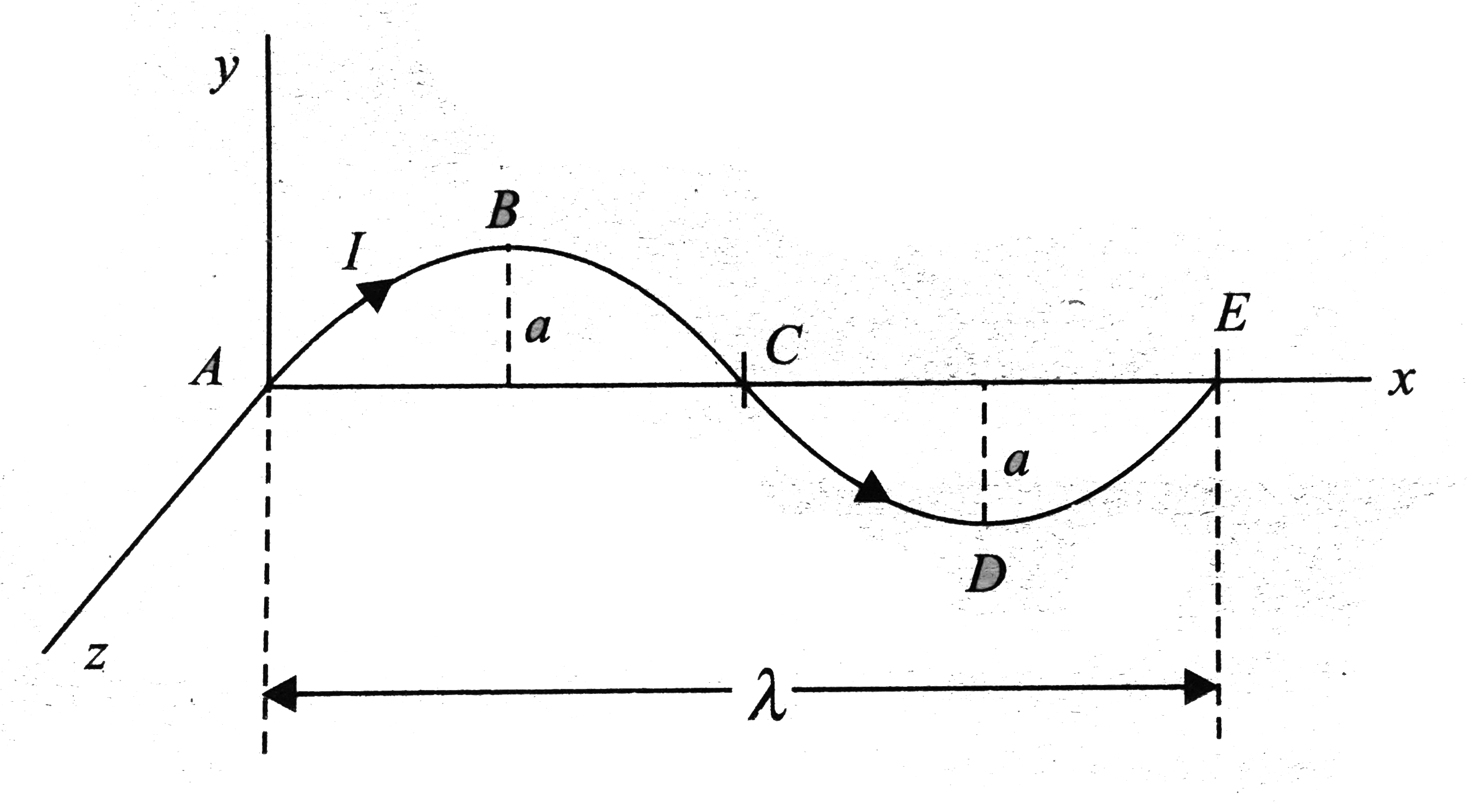Three paticles, an electron (e), a proton (p) and a helium atom (He) are moving in circular paths with constant speeds in the x-y plane in a region where a uniform magnetic field B exists along z-axis. The times taken by e, p and He inside the field to complete one revolution are te,tpandtHe respectively. Then,
tHe>tp=te
tHe>tp>te
tHe=tp=te
None of these
The correct Answer is:b
To solve the problem, we need to analyze the time periods of the three particles (electron, proton, and helium atom) moving in a magnetic field. The time period of a charged particle moving in a magnetic field is given by the formula:
T=2πmqB
where:
- T is the time period,
- m is the mass of the particle,
- q is the charge of the particle,
- B is the magnetic field strength.
1. Identify the particles and their properties:
- Electron (e):
- Mass (me) = 9.11×10−31 kg
- Charge (qe) = −1.6×10−19 C
- Proton (p):
- Mass (mp) = 1.67×10−27 kg
- Charge (qp) = +1.6×10−19 C
- Helium atom (He):
- Mass (mHe) = 4×mp (approximately)
- Charge (qHe) = +2×qp
2. Calculate the time period for each particle:
- For the electron:
Te=2πme|qe|B=2πmeeB
- For the proton:
Tp=2πmp|qp|B=2πmpeB
- For the helium atom:
THe=2πmHe|qHe|B=2π(4mp)2eB=2πmpeB
3. Compare the time periods:
- From the calculations:
- Te=2πmeeB
- Tp=2πmpeB
- THe=2πmpeB
Since me<mp, we have:
Te<Tp=THe
4. Conclusion:
The order of the time periods is:
Te<Tp=THe
Thus, the correct option that matches this sequence is option B.
- T is the time period,
- m is the mass of the particle,
- q is the charge of the particle,
- B is the magnetic field strength.
- Electron (e):
- Mass (me) = 9.11×10−31 kg
- Charge (qe) = −1.6×10−19 C
- Proton (p):
- Mass (mp) = 1.67×10−27 kg
- Charge (qp) = +1.6×10−19 C
- Helium atom (He):
- Mass (mHe) = 4×mp (approximately)
- Charge (qHe) = +2×qp
- For the electron:
Te=2πme|qe|B=2πmeeB
- For the proton:
Tp=2πmp|qp|B=2πmpeB
- For the helium atom:
THe=2πmHe|qHe|B=2π(4mp)2eB=2πmpeB
- From the calculations:
- Te=2πmeeB
- Tp=2πmpeB
- THe=2πmpeB
Te<Tp=THe
The order of the time periods is:
Te<Tp=THe
Thus, the correct option that matches this sequence is option B.
Topper's Solved these Questions
- MAGNETIC FIELD AND MAGNETIC FORCESBOOK - CENGAGE PHYSICS ENGLISHCHAPTER - MAGNETIC FIELD AND MAGNETIC FORCESEXERCISE - Exercises Multiple Correct
25 Videos
- MAGNETIC FIELD AND MAGNETIC FORCESBOOK - CENGAGE PHYSICS ENGLISHCHAPTER - MAGNETIC FIELD AND MAGNETIC FORCESEXERCISE - Exercises Assertion -reasoning
8 Videos
- MAGNETIC FIELD AND MAGNETIC FORCESBOOK - CENGAGE PHYSICS ENGLISHCHAPTER - MAGNETIC FIELD AND MAGNETIC FORCESEXERCISE - Exercises Subjective
10 Videos
- INDUCTANCEBOOK - CENGAGE PHYSICS ENGLISHCHAPTER - INDUCTANCEEXERCISE - Concept Based
8 Videos
- MISCELLANEOUS VOLUME 3BOOK - CENGAGE PHYSICS ENGLISHCHAPTER - MISCELLANEOUS VOLUME 3EXERCISE - True and False
3 Videos
Similar Questions
A charged particle having charge 2q and mass m is projected from origin in X-Y plane with a velocity v inclined at an angle of 45∘ with positive X-axis in a region where a uniform magnetic field B unit exists along +z axis. The coordinates of the centre of the circular path of the particle are
View SolutionAn electron and a proton enter region of uniform magnetic field in a direction at right angles to the field with the same kinetic energy. They describe circular paths of radius re and rp ?respectively. Then what will be the relation between re and rp?
View SolutionAn electron moving with a speed u along the positive x-axis at y=0 enters a region of uniform magnetic field which exists to the right of y-axis. The electron exits from the region after some time with the speed v at coordinate y, then

View SolutionAn electron moving with a speed u along the positive x-axis at y=0 enters a region of uniform magnetic field which exists to the right of y-axis. The electron exits from the region after some time with the speed v at coordinate y, then

View SolutionA proton of mass m and charge q is moving in a plane with kinetic energy E. if there exists a uniform magnetic field B, perpendicular to the plane motion. The proton will move in a circular path of radius
View SolutionAn electron (q=1.6×10−19C) is moving at right angles to a uniform magnetic field of 3.534×10−5 T The time taken by the electron to complete a circular orbit is
View SolutionA conductor ABCDE, shaped as shown, carries current I. It is placed in the x-y plane with the end A and E on the x-axis. A uniform magnetic field of magnitude B exists in the region. The force acting on it will be

View SolutionA conducting rod is rotated about one end in a plane perpendicular to a uniform magnetic field with constant angular velocity. The correct graph between the induced emf (e) across the rod and time (t) is
View SolutionA proton is moving in a uniform magnetic field B in a circular path of radius a in a direction perpendicular to Z- axis along which field B exists. Calculate the angular momentum. If the radius is a and charge on proton is e.
View SolutionA charged particle P leaves the origin with speed v=v0 at some inclination with the x-axis. There is a uniform magnetic field B along the x-axis. P strikes a fixed target T on the x-axis for a minimum value of B=B0. P will also strike T if
View Solution
